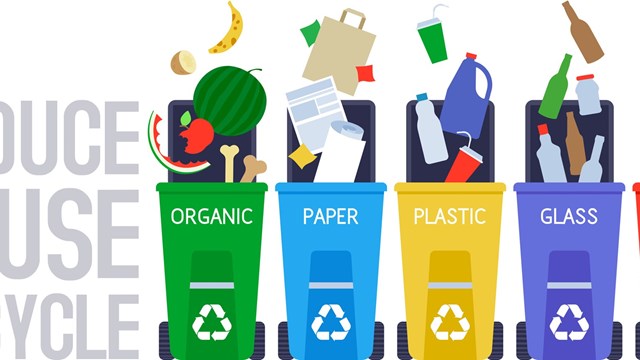While we were all busy with other things, LEED came mainstream. No less a source than the Harvard Business Review agreed that green building is good in a June 2006 article by Charles Lockwood, an environmental and real estate consultant.
For the uninitiated, Leadership in Energy and Environmental Design (or LEED) is, "A voluntary, consensus-based national standard for developing high-performance, sustainable buildings." The effort is directed to the specific areas of site selection, efficiency in water usage, energy and the atmosphere, materials and resources, indoor air quality, and innovation in design.
LEED has matured almost overnight for a number of reasons, prime among which has to be a hard-nosed nod of approval by financial institutions and investors. In all likelihood what caught their attention is the fact that the same LEED system used to measure feasibility in the design concept stage is also able to confirm the reduced operational costs of buildings over time. The prophecy is able to fulfill itself. Some are beginning to think that this may lead to a revision in the way we assess the value of commercial buildings. Value may properly lie with better performance. Move over, location!
Take Note of Canada
Could this mean that buildings not built to LEED standards are headed toward obsolescence? Our Canadian neighbors have been pointing the way toward energy conservation in residential buildings for some time now.
While visiting the Build Boston tradeshow of the Boston Society of Architects last November, I benefited from an informative conversation with a woman who was actively promoting Canadian green building products. She energetically explained the strong role that LEED plays in the exploding condominium construction around Alberta. The development of new deposits of oil in the region's sandy soils has led to a sudden need for housing there. There was a lovely irony that efforts strong on energy conservation should be running cheek-by-jowl with the mining of the product that seems to lull us into thinking its sources are unlimited.
Canadians interested in building green have a strong ally in the Canadian Mortgage and Housing Corporation (CMHC). According to its own Web site, the corporation, "is Canada's national housing agency. Established as a government-owned corporation in 1946 to address Canada's post-war housing shortage, the agency has grown into a major national institution. CMHC is Canada's premier provider of mortgage loan insurance, mortgage-backed securities, housing policy and programs, and housing research." The CMHC actively supports hands-on research in the building sciences. The organization's efforts, my Build Boston contact wryly pointed out, are also visibly free of the overtones of bureaucracy. Hello, HUD and Fannie Mae? Perhaps the colder climate induces a brisker incentive.
Air Flow Is Key
One of the emerging concepts that holds a great deal of promise to reduce the energy consumed to heat or cool these condominium buildings is air barrier design. Developed for new construction, the design installation can also be retrofitted into existing buildings. Five years ago, the Massachusetts Commercial Energy Code, following along on "that strange Canadian phenomenon," began requiring air barrier design in new commercial construction. New Hampshire and Maine have followed with similar efforts aimed toward residential construction.
The concept of an air barrier centers on managing building air pressure fluctuations that are induced by wind, stack effect, and mechanical equipment. Those fluctuations transport out of the building the air that was just conditioned by heating or cooling. To replace the exiting air, unconditioned outdoor air needs to be pulled in, which, in turn, requires more energy to heat or cool it.
Air barriers are not the same as vapor retarders. A vapor retarder can fulfill its assigned duty of impeding moisture penetration even though it's not completely continuous or structurally secure. Air barriers, on the other hand, must be continuous throughout the building's exterior wall cavity. To test the thesis, try placing your finger on one end of a straw and then attempting to blow air through the straw. You can't move the air. But place a pinhole somewhere along the straw and the result is a noticeable loss of air from the previously restricted column.
To make continuous air barriers effective, both designer and installer must have a common understanding. Designers need to appreciate the finesse required to wrap an air barrier fabric around three-dimensional construction when their documents, for the most part, impart information in two dimensions. Generic information on drawings of the "fill-in-the-blanks" mentality will not get the job done correctly. Faced with deadlines of time and cost, installers will lean toward compromising the continuity of the air barrier. But the truth is that an air barrier installed correctly will lead to a dramatic drop in energy consumption. A report* by the National Institute of Standards and Technology confirms, "Air barrier systems can reduce air leakage by up to 83 percent and energy consumption by up to 40 percent." That's a goal worth setting before designers of new condominium construction.
Retrofits Are Worth the Effort
A good case could be made for suggesting that air barrier design had its genesis in the effort to seal up drafty buildings during the energy crisis in the 1970s. That concept is still valid and can make effective reductions in energy consumption in existing condominium buildings. During the 2006 tradeshow of the New Hampshire Chapter of Community Associations Institute, I teamed up with GDS Associates to present a series of considerations for stakeholders in common-interest developments.
It is possible to back-fit existing condominium buildings for significant reduction in heat and cooling energy as well as water and electrical power consumption. The people who manage common-interest developments are in a unique position to do for their homeowners what the home-owners cannot do for themselves. They can alter the commonly owned building envelope to attain reductions in energy inside the unit boundaries where the homeowners live. The program of auditing buildings, designing energy reduction packages, and putting them in place with verifiable results has a clear and short return on investment. The savings then continue on for the lives of the buildings.





Leave a Comment